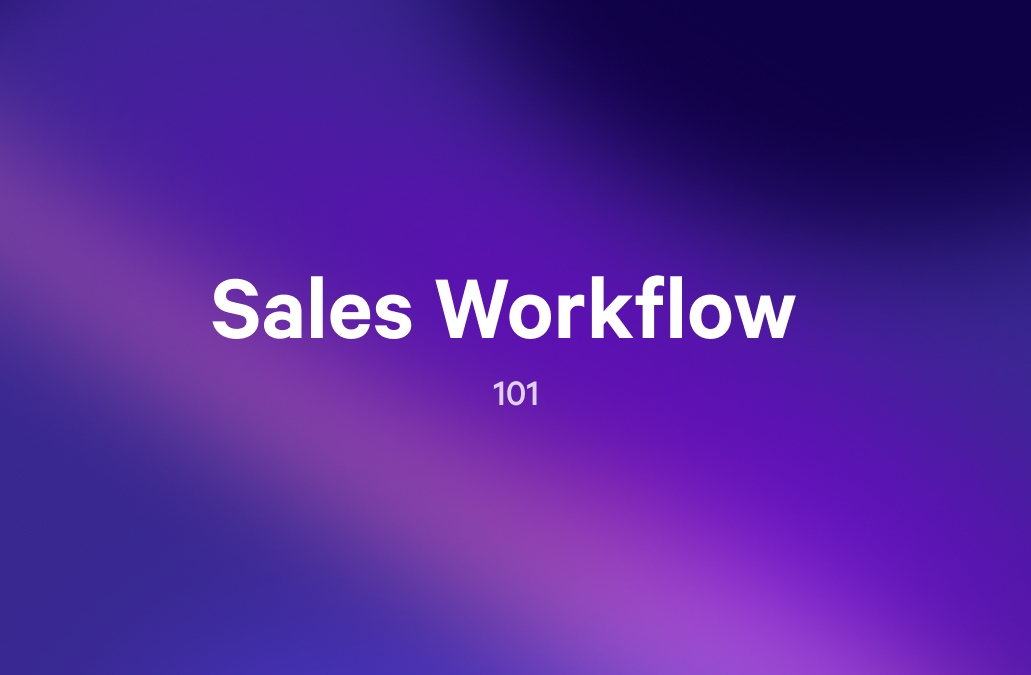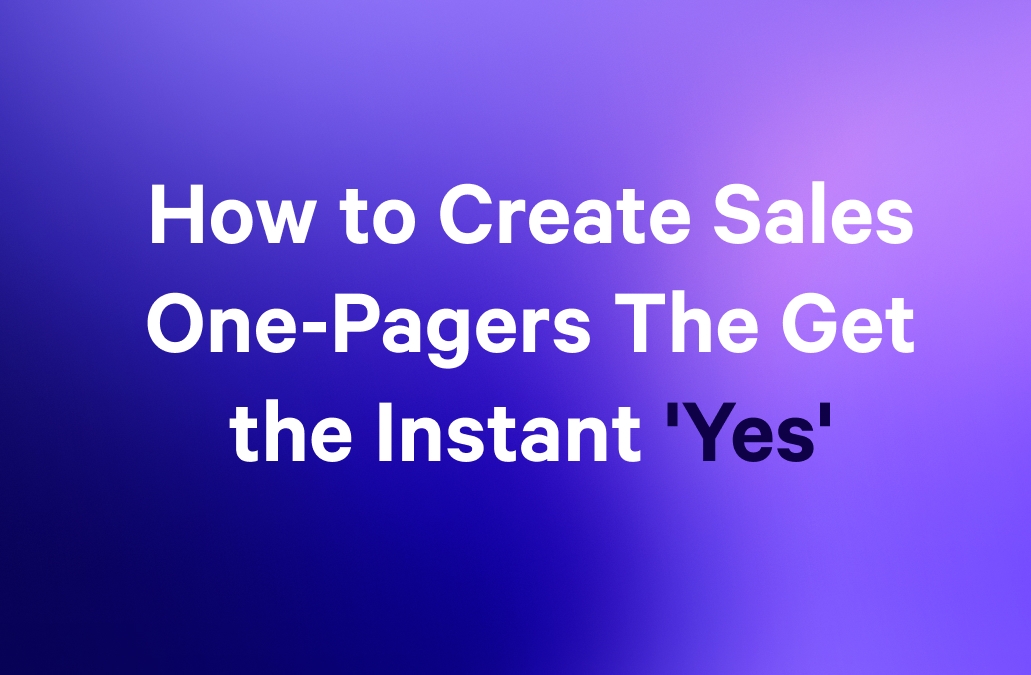Back in the day when I worked in investment sales and managed portfolios of ultra-high-net-worth clients, I witnessed two distinct types of investors, and the difference between them was night and day.
The first group consisted of methodical portfolio curators who studied every opportunity and only invested when all factors aligned. The second group (we called them jumpers) was like kids in a candy store, chasing every hot tip and "can't miss" deal, hoping that sheer volume would eventually hit the jackpot.
The conservative curators consistently crushed the returns of the deal-chasers. Every. Single. Time.
If you’ve worked in sales leadership or supported proposals, you’ve probably seen this first-hand:
- RFPs rushed through the pipeline because “we might as well try.”
- Top resources pulled onto long-shot bids that were doomed from the start.
- Sales and proposal teams measured by volume, not revenue impact.
- No clear feedback loop to improve qualification or outcomes.
The result? An exhausting cycle of reactive effort with no predictable payoff. The best companies break it by managing proposals like a portfolio—investing, where they can drive real returns, not just responding to every request. They focus on outcomes, not activity.
In this article, we’ll share practical ways to build that discipline into your proposal process: how to structure your portfolio, what high-performing teams do differently, and how to use tools and data to turn proposals into a strategic driver of predictable revenue.
But like any sound investment strategy, we need to start with the fundamentals...
What is proposal management?
If you ask most sales leaders what proposal management is, you’ll hear the textbook answer: “It’s the process of creating, submitting, and tracking proposals in response to RFPs.”
That’s not wrong, but it’s incomplete.
Proposal management should be about much more than process. It’s about deciding where your team invests its time and effort, because every proposal comes with a cost. Resources spent on low-probability, low-impact deals can’t be spent on strategic opportunities that move the needle.
Real proposal management is about building a disciplined portfolio of opportunities that align with your strengths, your sales strategy, and your revenue goals. The goal isn’t to chase every deal, but to pursue the right ones, win them well, and continuously improve your ability to do so.
When you manage proposals this way, everything shifts:
- You stop asking “How fast can we turn this around?” and start asking “Is this worth pursuing?”
- You stop focusing on volume and start optimising win rates and revenue outcomes.
- You transition from a reactive effort to an intentional, strategy-driven execution.
That’s the difference between teams that spin their wheels and teams that win consistently.
And it’s why proposal management needs ownership, not just coordination. That’s where the Proposal Manager comes in.
How a Proposal Manager turns strategy into wins
You may think you already have the role of a proposal manager with a Bid Manager, Sales Ops resource, or RevOps lead supporting proposal efforts. And while those roles play valuable parts, McKinsey research consistently shows that when organisations lack clear ownership and decision-making accountability, inefficiencies and opportunity costs multiply.
In proposal management, this often manifests as wasted effort, missed opportunities, and eroded win rates—outcomes that no sales leader can afford.
A strong Proposal Manager shifts this dynamic. They help sales leaders focus time and effort where it’s most likely to pay off—building discipline into the process and driving measurable outcomes. This isn’t project management—it’s strategic execution. On any given week, a Proposal Manager is in pipeline reviews, driving bid/no-bid discussions, prioritising high-value deals, tracking win/loss trends, and reporting portfolio performance to sales leadership and the C-suite.
If you’re hiring for this role, here’s what to look for:
- Commercial judgement: Knows what makes a deal worth pursuing—and what doesn’t.
- Analytical mindset: Tracks performance over time and improves qualification decisions based on real data.
- Cross-functional leadership: Aligns sales, marketing, finance, and legal to deliver consistent, high-quality proposals.
- Resource optimisation: Ensures your team’s effort maps to revenue potential, not just activity.
- Strategic execution: Balances near-term wins with long-term growth bets—and helps leadership manage the proposal portfolio accordingly.
How smart teams build a high-performing proposal portfolio— best practices
You’ve got the role in place. The mindset is there. But this is where even good teams stumble.
It’s one thing to say “We’ll be more selective.” It’s another to actually run proposal management as a revenue-driving discipline week in, week out—especially when pipeline pressure hits and tempting deals start landing.
This is where leadership matters. The best sales organisations embed proposal discipline into how they operate. They manage their proposal portfolio with the same rigour they manage their pipeline—because they know that wasted proposal effort shows up in lost revenue, lost time, and team burnout.
Here’s how smart teams build that discipline—and turn their proposal portfolio into a real growth lever.
Prioritise the right opportunities upfront
If there’s one place most proposal effort gets wasted, it’s here—chasing deals that were never winnable or never aligned with the business. And when pipeline pressure is on, this discipline is the first thing to crack.
The best sales leaders treat qualification as a first-class sales motion, not a quick checkbox before the team starts writing. They build clear gates for what moves forward, and they back those no-bid decisions visibly.
One model many teams use is simple, but powerful:
| Criteria | Weight |
|---|---|
Fit with ICP | 30% |
Win probability | 25% |
Strategic alignment (including stakeholder buyin) | 20% |
Relationship strength | 10% |
Resource cost vs potential | 10% |
Deals that score below the threshold don’t proceed—no exceptions. And this is where leadership discipline matters: if your managers are quietly waving low-score deals through, the whole system breaks.
Beyond scoring, high-performing teams also get specific about what they will not pursue. A few common red flags:
- RFPs from accounts that don’t fit your ICP—for example, if you’re an enterprise SaaS company targeting mid-market and enterprise, small business RFPs almost never justify the effort.
- Opportunities where no relationship exists and the RFP comes in cold—if you’re not influencing the deal early, your win probability is already low.
- Mandatory requirements you can’t meet, or processes led entirely by procurement with no access to business buyers.
- Low-margin RFPs that require excessive effort or offer little long-term value—if your top resources are burning time here, that’s revenue lost elsewhere.
Before your team invests time writing an RFP response, ensure the opportunity meets these criteria. One thing the best teams do here: they make qualification outcomes visible. Bid/no-bid decisions happen in pipeline reviews, not inside conversations or Slack threads. The Proposal Manager and Sales Leadership jointly own these calls, and the rest of the team sees that discipline in action.
Because if you don’t show the team that you’ll walk away from the wrong deals, they’ll keep chasing them.
Manage portfolio balance, not just pipeline volume
Even when the qualification is strong, portfolios drift. It happens fast—one big stretch opportunity lands, pipeline reviews start leaning toward “what can close fastest,” and before long, your team is spread thin across deals that don’t serve your revenue goals.
This is why high-performing teams actively manage their proposal portfolio mix, not just proposal volume. They know that a healthy portfolio drives both predictability and growth, and that an unbalanced one eats team bandwidth without delivering results.
A simple portfolio lens many teams use:
- Safe bets > Renewals, expansions, repeat business with strategic accounts. These deals anchor predictable revenue and protect your customer base.
- Calculated risks > Well-qualified new logo opportunities in target verticals or markets. This is where smart growth happens—aligned to strategy, with clear win paths.
- Strategic stretch bets > Large RFPs in new segments, strategic government bids, or market-making partnerships. High upside, high effort—pursued selectively, not stacked.
For leadership, here’s a useful target mix:
- 50–60% Safe bets
- 30–40% Calculated risks
- 10–15% Strategic stretch bets
If your portfolio skews too heavily toward high-risk bets and low win rates, then team fatigue can creep in. Too many safe bets? Growth stagnates. Managing this balance quarter over quarter is what turns proposal management into a revenue driver, not just an activity tracker.
Here’s a simple gut check: when your team talks about proposals, do they talk about wins or volume? If they’re celebrating “10 proposals out the door this month,” you likely have a balance problem. High-performing teams celebrate high-value wins, and they measure proposal effort through that lens.
Monthly portfolio review checklist
☐ Review proposal portfolio mix (50-30-20 target) ☐ Calculate win rate by deal type (safe bets vs. calculated risks vs. stretch bets) ☐ Assess resource allocation: Are top performers doing high-value work? ☐ Analyze qualification accuracy: Which deals we should have no-bid? ☐ Track proposal-to-revenue ratio: ROI per proposal dollar invested ☐ Review competitive win/loss patterns by deal type ☐ Evaluate team capacity vs. pipeline demands for next 90 days ☐ Update qualification criteria based on recent wins/losses ☐ Check proposal content performance: Which templates drive results? ☐ Assess client feedback and proposal experience quality
Pro tip: Block 2 hours monthly for this review. Make it part of your sales rhythm, not a separate exercise. The insights you gather here should directly inform your next quarter's proposal strategy and resource allocation decisions.
Run proposal management as part of your sales rhythm
Even with the proper qualification, discipline, and portfolio targets, proposal management falls apart when it runs in isolation. Too many teams still treat proposal work as an afterthought—something they scramble to execute once a deal hits the final stages.
High-performing sales organisations take a different approach: they embed proposal management directly into their core sales rhythm, so qualification, prioritisation, and execution stay aligned to revenue goals.
At a minimum, this shows up in four places:

- Pipeline reviews > Everyone sees which deals move forward, which don’t, and why
- QBRs > Proposal portfolio mix and win rates are reviewed right alongside pipeline, forecast, and closed revenue, not as a separate operational report. If proposals aren’t part of the revenue conversation, you’ll struggle to align effort to outcomes.
- Deal retros > Post-mortems on won and lost proposals feed directly into qualification criteria and proposal content improvements. This is where the Proposal Manager earns trust, bringing insights back into the sales cycle, not just managing projects.
- Leadership dashboards > Proposal-related metrics—win rate by deal type, revenue per proposal dollar invested, % of proposals qualified out pre-bid—should be as visible to sales leadership as pipeline coverage or forecast accuracy. If you don’t measure it, you can’t manage it.
The key is cadence—when proposal discipline is reinforced weekly (pipeline reviews) and quarterly (QBRs), it sticks. When it’s treated as an annual health check, it won’t.
The missing link: turning proposal strategy into execution at scale
Even when qualification and portfolio discipline are strong, there’s one place where many sales teams still leave value on the table: proposal experience. In too many organisations, proposal content is treated as a late-stage deliverable—generic, templated, and rushed. Buyers notice this, and in competitive cycles, this is often where deals are won or lost.
High-performing teams take a different view. They treat proposals as an extension of their sales motion and brand experience, not just paperwork to check a box.
Qwilr flips this by giving teams the tools to create interactive proposals that stand out and providing deep insights into engagement that drive smarter sales follow-ups. Consider Lambda, a company operating in the complex field of AI. They faced the challenge of communicating intricate offerings to both technical and non-technical stakeholders.
Robert Brooks, Director of Sales at Lambda, shared:
“What may be interesting to an engineer is probably different than what’s interesting to someone without a technical background. Since we're doing these six and seven-figure deals, it’s important we’re able to show our value to everyone involved.”
By adopting Qwilr, Lambda transformed its proposal process:
- Interactive, on-brand proposals that effectively communicate value to diverse stakeholders.
- Real-time engagement tracking allowing for timely and informed follow-ups.
- Standardized templates and content blocks, ensuring consistency and efficiency.
- Centralized collaboration while reducing the need for back-and-forth communications.

Brooks noted the impact:
“The Qwilr page means our champion has everything they need to make their pitch and don’t have to reach back out to us to get more information.”
Of course, quality doesn’t have to come at the expense of efficiency, especially in organisations running high volumes of RFP-driven business. Well-qualified opportunities should move quickly, and innovative teams use standardized tools to help them do so.
A clear, well-structured RFP template or bid proposal template helps your team respond quickly and consistently, without reinventing the wheel for every deal or compromising on proposal quality.
And here’s one place where leadership often underestimates the cost: if your top sellers are spending hours formatting decks or editing proposal PDFs, that’s not a content problem—that’s a leadership problem. The best teams free their sellers to focus on selling and arm them with proposal tools and processes that deliver both quality and efficiency at scale.
If you’re ready to turn proposal management into a strategic revenue driver—not just an operational task—we’d love to show you how. Book a demo and see what’s possible!
About the author

Taru Bhargava|Content Strategist & Marketer
Taru is a content strategist and marketer with over 15 years of experience working with global startups, scale-ups, and agencies. Through taru&co., she combines her expert skills in content strategy, brand management, and SEO to drive more high-intent organic traffic for ambitious brands. When she’s not working, she’s busy raising two tiny dragons. She's on a first-name basis with Mindy Kaling.



